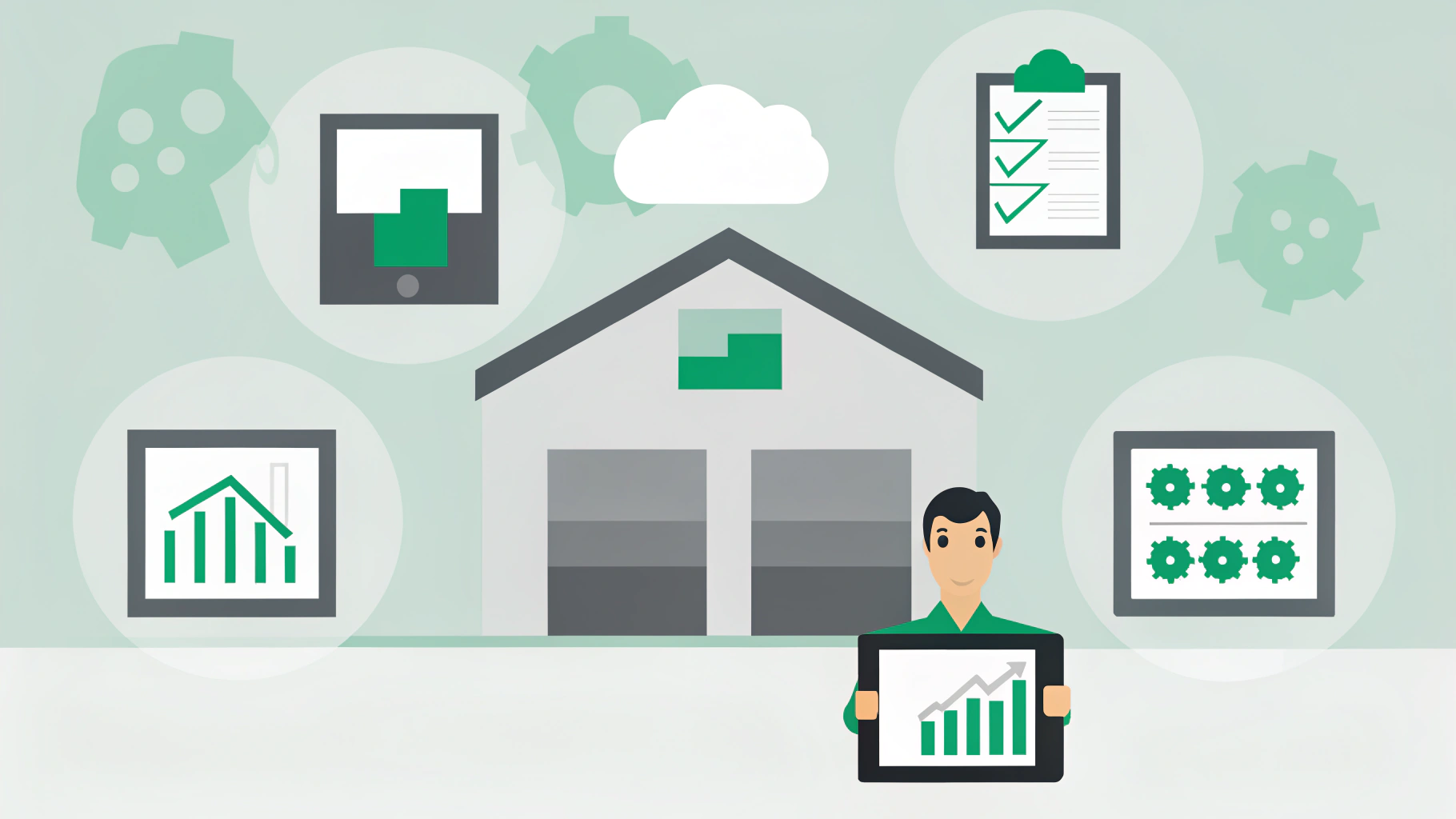Overview
ERP SaaS stands as a cornerstone for the operational success of distributors, offering a flexible, scalable, and cost-effective solution to manage inventory, track orders, and ensure compliance with industry regulations. This necessity is underscored by the substantial return on investment and operational enhancements reported by companies utilizing 10X ERP. By addressing the specific challenges faced by distributors, it provides integrated, cloud-based features that significantly enhance efficiency and decision-making. Such capabilities not only streamline operations but also empower distributors to navigate the complexities of their industry with confidence.
Introduction
The distribution industry stands at a pivotal juncture, confronted by distinct challenges that necessitate innovative solutions. As the landscape shifts, the integration of Software as a Service (SaaS) Enterprise Resource Planning (ERP) systems emerges as a vital strategy for enhancing operational efficiency and responsiveness. This article examines the indispensable role of ERP SaaS for distributors, elucidating how its flexibility, scalability, and cost-effectiveness can revolutionize operations. However, with 64% of ERP projects facing budget overruns, a pressing question arises: how can distributors adeptly navigate these challenges to fully harness the advantages of ERP SaaS and secure their operational success?
Define SaaS ERP and Its Relevance to Distributors
ERP SaaS, which stands for Software as a Service Enterprise Resource Planning, represents a transformative approach to accessing ERP software via the internet. Unlike traditional ERP systems that necessitate on-premises installation and maintenance, ERP SaaS is hosted by third-party providers, allowing users to access the software from any internet-enabled device. This model is especially beneficial for suppliers, providing flexibility, scalability, and cost-effectiveness.
Distributors encounter distinct challenges, such as:
- Managing inventory across multiple locations
- Tracking orders in real-time
- Ensuring compliance with industry regulations
10X ERP is specifically designed to tackle these issues by providing integrated solutions that streamline operations, enhance visibility, and facilitate data-driven decision-making. With features like robust accounting, real-time data processing, and customizable inventory tracking, 10X ERP ensures that suppliers know exactly where their inventory is at any time. Additionally, the software’s all-inclusive nature means that all necessary components are built-in, eliminating the need to identify separate modules. Companies utilizing 10X ERP have reported significant improvements, including a 52% average return on investment, indicating that for every dollar invested, they gain $1.52 back, often within just over 2.5 years. Furthermore, 40% of businesses report reduced IT costs as the biggest area of ROI from ERP, further emphasizing the financial benefits of these systems.
As the worldwide cloud ERP market is anticipated to expand considerably, achieving $181.04 billion by 2032 with a CAGR of 15.5% throughout the forecast span from 2024 to 2032, the importance of ERP SaaS for suppliers continues to increase. By leveraging 10X ERP, suppliers can optimize their operations, enhance inventory management, and respond swiftly to market demands, ultimately driving operational success. Notably, 91% of companies that had at least one phase of the project live for a year or longer reported optimized inventory levels as a benefit. However, it is important to acknowledge that 64% of ERP projects experience budget overruns, highlighting potential challenges in implementation. The clear pricing model and smooth user experience further increase the value of 10X ERP, making it a perfect option for businesses seeking to enhance their operational efficiency.
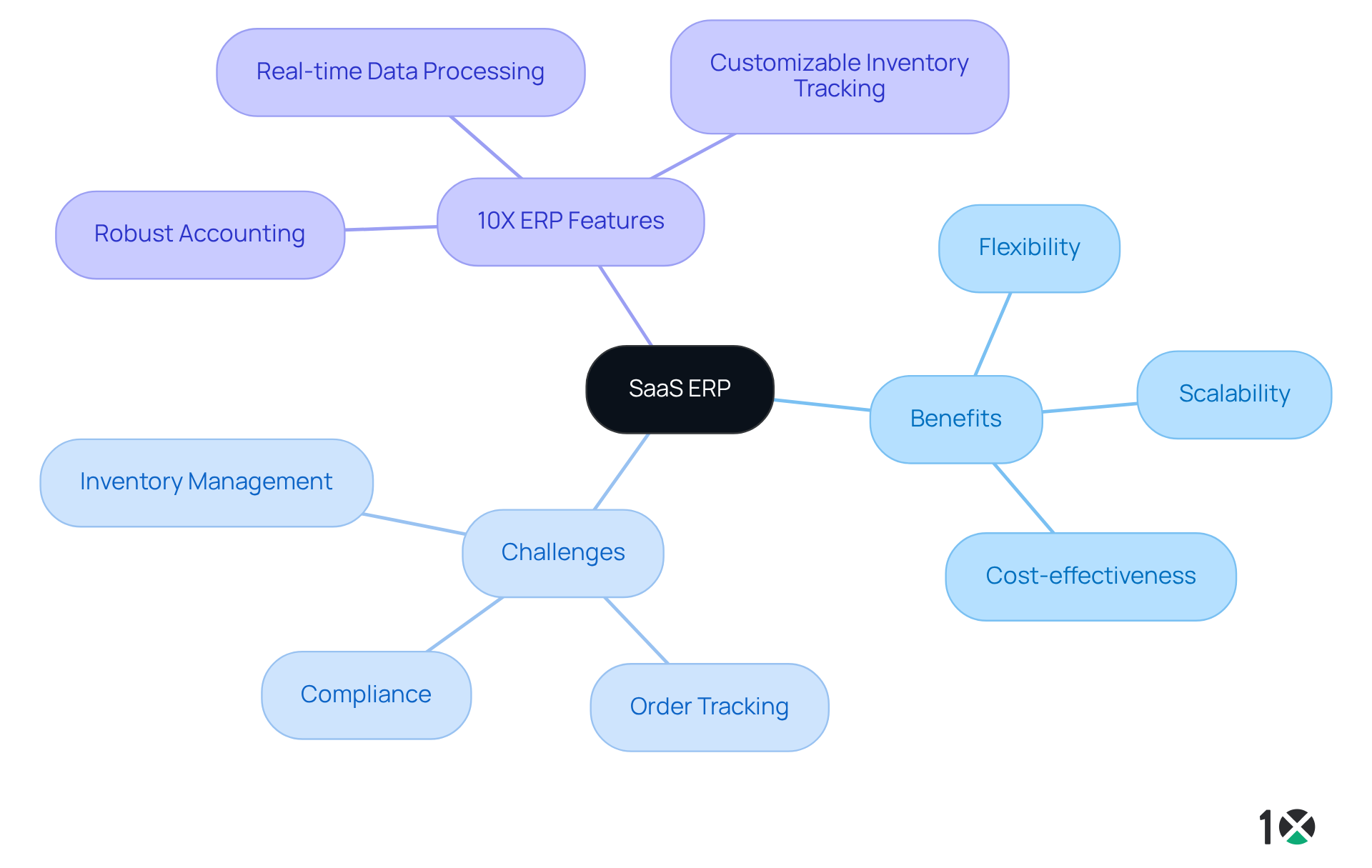
Explore the Advantages of SaaS ERP for Distributors
ERP SaaS solutions that are cloud-based present numerous advantages for suppliers, particularly in terms of cost-effectiveness and operational adaptability. By eliminating the need for costly hardware and extensive IT infrastructure, these solutions significantly lower initial expenses, making them ideal for suppliers with budget constraints. Moreover, automatic updates and maintenance guarantee that users benefit from the latest features and security enhancements without incurring additional costs.
The scalability of cloud-based ERP is particularly noteworthy, allowing suppliers to adjust their usage in response to evolving business needs, whether they are expanding operations or managing seasonal fluctuations. This flexibility is essential in a dynamic market landscape. Access to real-time data further enhances decision-making capabilities, empowering distributors to promptly react to market shifts and customer demands. With 10X ERP’s robust accounting and dependable inventory management features, users can monitor inventory with customizable attributes and lot/serial item tracking, ensuring they are always aware of their inventory status.
User-friendly interfaces of various ERP SaaS solutions foster greater user adoption and satisfaction, ultimately leading to more efficient operations. 10X ERP is designed with seamless integration capabilities, facilitating smooth connectivity with existing infrastructures, which boosts operational efficiency. On average, small-to-mid-sized businesses can anticipate completing an ERP implementation within 3 to 9 months, whereas larger organizations may require 6 to 18 months. This relatively swift implementation timeline allows suppliers to start reaping the benefits of their new systems sooner, significantly contributing to their operational success. Furthermore, 91% of organizations reported improved inventory levels post-ERP implementation, underscoring the operational benefits of ERP SaaS solutions.
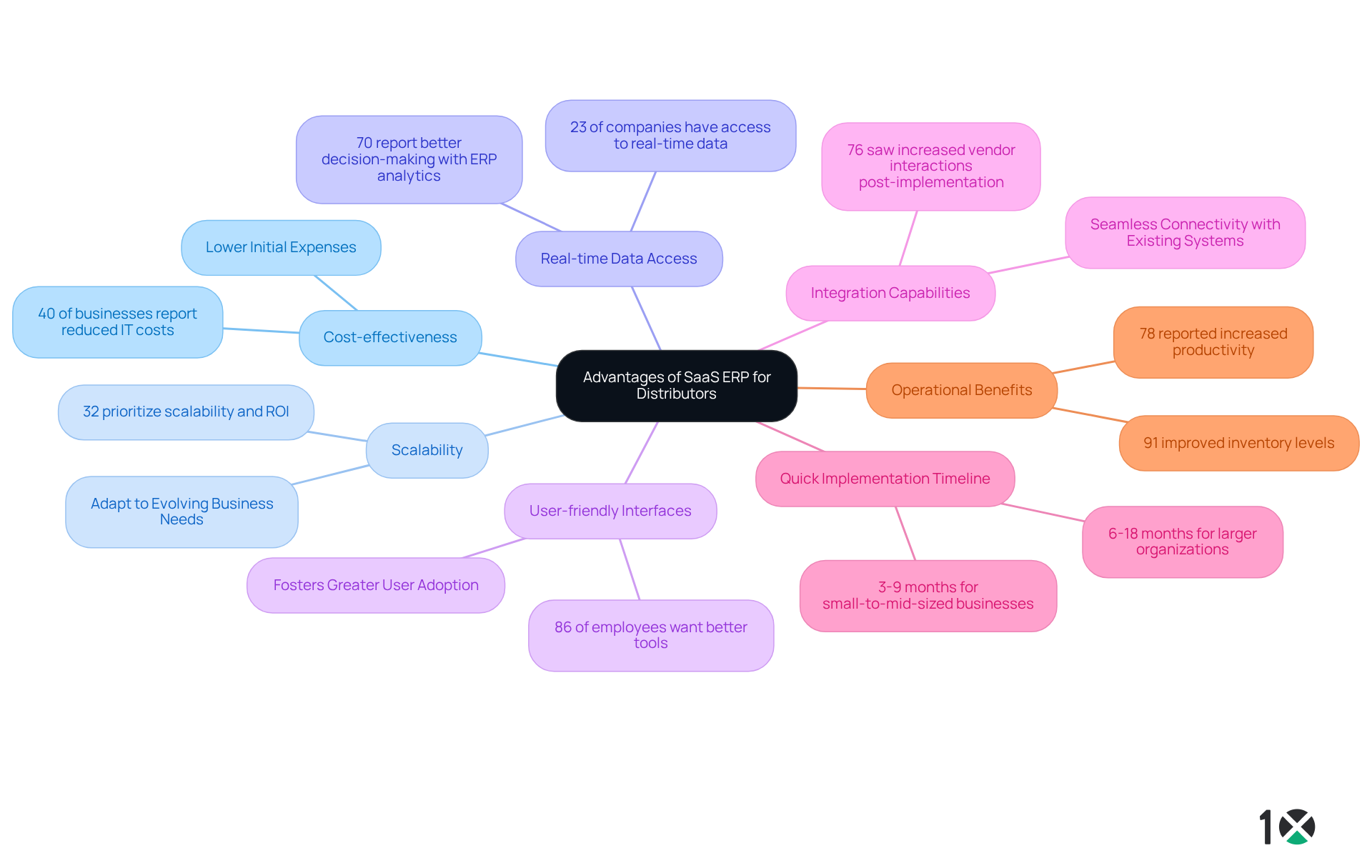
Address Challenges in Traditional ERP Systems with SaaS Solutions
Conventional ERP solutions often present considerable obstacles that can hinder operational efficiency for distributors. These frameworks generally require significant initial expenditures on hardware and software, coupled with ongoing maintenance costs that may escalate over time. The complexity inherent in traditional ERP implementations can lead to prolonged deployment periods, disrupting business operations and delaying the realization of benefits. Furthermore, many traditional systems lack the necessary flexibility to adapt to the dynamic nature of the distribution industry, making it challenging for businesses to scale effectively.
The reliance on on-premises infrastructure further restricts accessibility, preventing employees from accessing critical data while working remotely or on the go. In contrast, ERP SaaS solutions that are cloud-based effectively tackle these challenges by offering a more agile, cost-effective, and user-friendly alternative. With lower initial expenses and diminished IT responsibilities, ERP SaaS enables suppliers to enhance their operations effortlessly. Statistics show that adopting an ERP SaaS solution is often simpler and quicker than conventional methods, allowing businesses to adjust rapidly to evolving market needs. Consequently, numerous distributors are shifting to ERP SaaS to improve their operational success and sustain a competitive advantage.
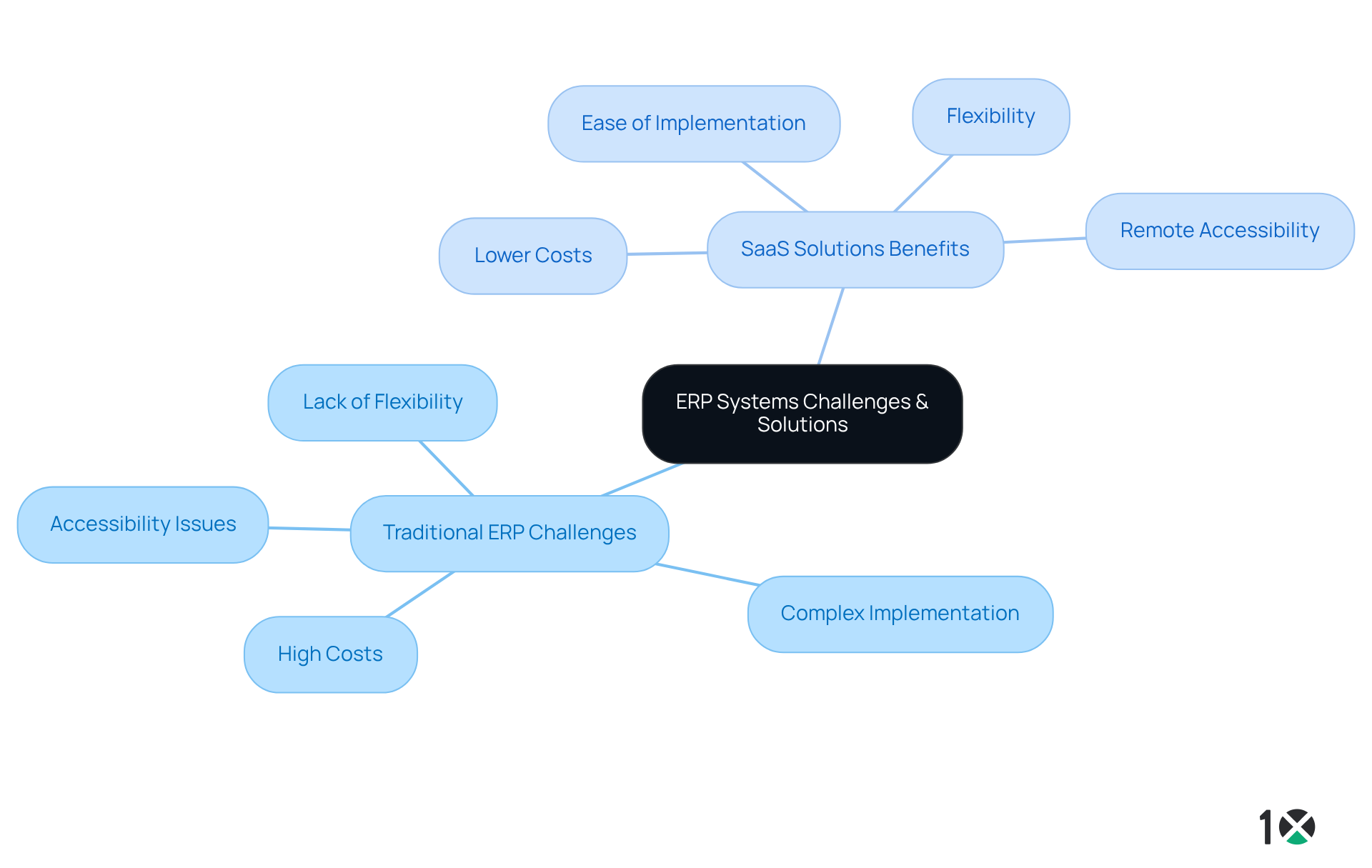
Implement SaaS ERP: Steps for Successful Transition
Transitioning to an ERP SaaS solution requires a strategic approach to ensure effective implementation. Distributors must begin with a comprehensive evaluation of their current processes, identifying specific requirements that the new solution must fulfill. This evaluation should cover existing software, workflows, and pain points, enabling organizations to highlight areas for improvement.
Choosing the right ERP SaaS provider is paramount; businesses should prioritize vendors like 10X ERP, which are recognized for their seamless user experience, transparent pricing, and exceptional support tailored for distributors. With features such as rapid onboarding and extensive training resources, 10X ERP ensures that organizations can smoothly adapt to the new platform. Notably, statistics reveal that 85% of organizations deem their ERP projects successful when engaging a software consultant for implementation, underscoring the importance of selecting the right provider.
Once a provider is chosen, meticulous planning of the implementation process becomes essential. This involves setting clear objectives, timelines, and appointing a dedicated project team to oversee the transition. Significantly, 49% of companies go live on schedule, while 27% face delays, emphasizing the necessity of effective project management.
Educating staff on the new platform is crucial for fostering user adoption and minimizing disruptions. With 10X ERP’s in-app video guides and personalized support, organizations can boost user adoption and productivity. Statistics indicate that 78% of organizations witness improved productivity post-implementation, reinforcing the significance of effective training.
Finally, ongoing evaluation and feedback collection following implementation will enable organizations to refine their use of the ERP SaaS, ensuring it adapts to their evolving needs and continues to drive operational success.
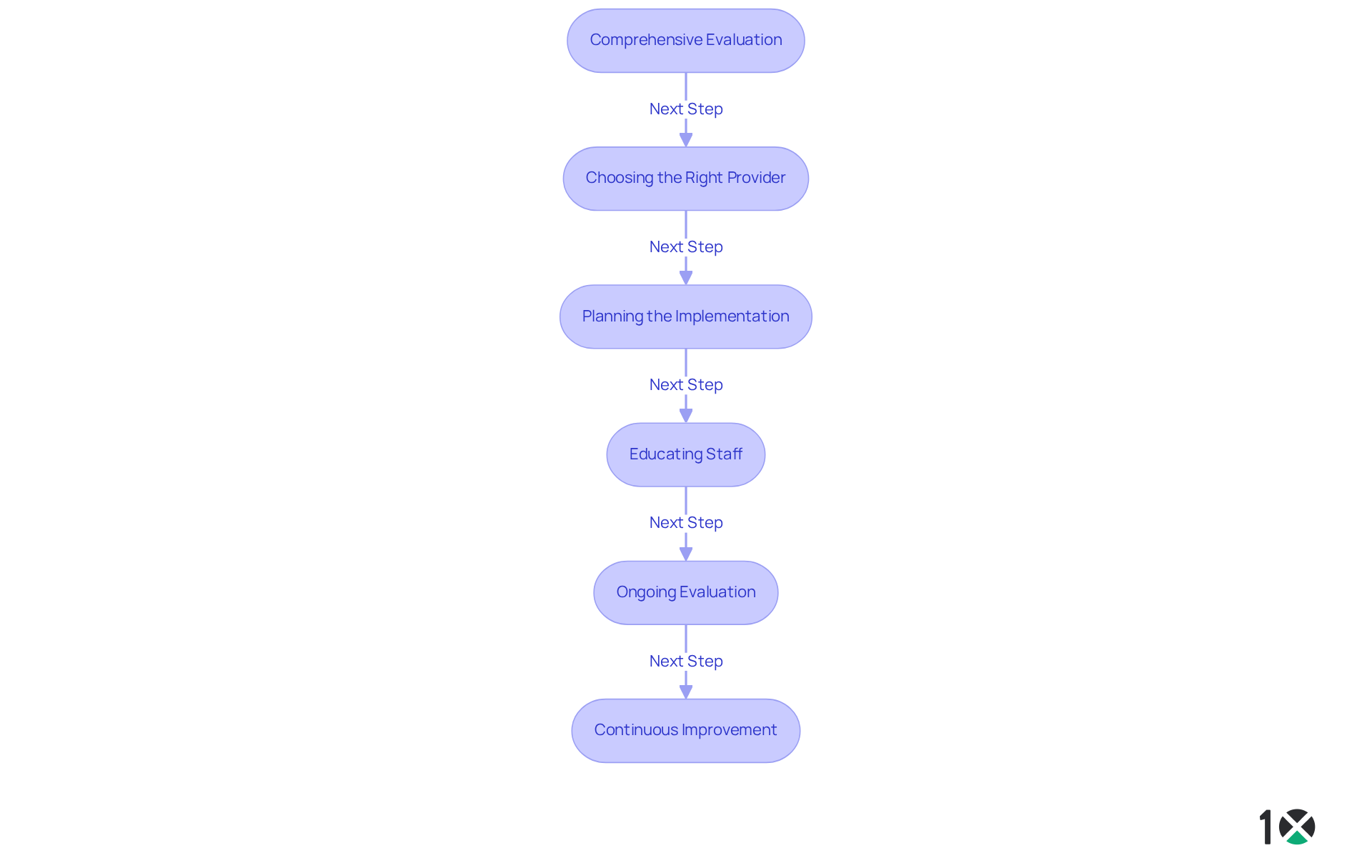
Conclusion
The adoption of ERP SaaS is essential for distributors aiming to enhance operational efficiency and achieve success. By leveraging cloud-based solutions like 10X ERP, distributors can effectively navigate traditional challenges related to inventory management, order tracking, and regulatory compliance. This contemporary approach not only streamlines operations but also offers the flexibility and scalability necessary to excel in a competitive market.
Key advantages of ERP SaaS include:
- Cost-effectiveness
- Real-time data access
- User-friendly interfaces
The substantial return on investment reported by businesses utilizing these systems highlights their value in driving operational success. Moreover, the challenges associated with traditional ERP systems, such as high initial costs and inflexibility, are adeptly addressed by the agile nature of SaaS solutions, making them an appealing alternative for distributors.
In conclusion, transitioning to ERP SaaS is not merely a technological upgrade; it represents a strategic initiative that can redefine the operational landscape for distributors. Embracing this shift prepares businesses to adapt to evolving market demands and positions them for sustained growth and success. For distributors seeking to enhance their efficiency and responsiveness, investing in ERP SaaS is a critical step towards achieving operational excellence.
Frequently Asked Questions
What is SaaS ERP?
SaaS ERP, or Software as a Service Enterprise Resource Planning, is a model that allows users to access ERP software via the internet instead of requiring on-premises installation and maintenance. It is hosted by third-party providers and can be accessed from any internet-enabled device.
What challenges do distributors face that SaaS ERP can help address?
Distributors face challenges such as managing inventory across multiple locations, tracking orders in real-time, and ensuring compliance with industry regulations. SaaS ERP solutions like 10X ERP are designed to tackle these issues.
What features does 10X ERP offer to distributors?
10X ERP offers features such as robust accounting, real-time data processing, customizable inventory tracking, and an all-inclusive system that eliminates the need for separate modules. This helps streamline operations and enhances visibility.
What are the reported benefits of using 10X ERP?
Companies using 10X ERP have reported a 52% average return on investment, indicating that for every dollar invested, they gain $1.52 back, often within just over 2.5 years. Additionally, 40% of businesses noted reduced IT costs as a significant area of ROI.
What is the projected growth of the cloud ERP market?
The worldwide cloud ERP market is anticipated to grow significantly, reaching $181.04 billion by 2032, with a compound annual growth rate (CAGR) of 15.5% from 2024 to 2032.
How does 10X ERP help suppliers optimize their operations?
By leveraging 10X ERP, suppliers can enhance inventory management, respond quickly to market demands, and ultimately drive operational success, with 91% of companies reporting optimized inventory levels after implementing the system.
What challenges are associated with ERP project implementation?
It is important to note that 64% of ERP projects experience budget overruns, which highlights potential challenges in the implementation process.
What makes 10X ERP a suitable option for businesses?
The clear pricing model, smooth user experience, and comprehensive features of 10X ERP increase its value, making it a strong choice for businesses looking to enhance operational efficiency.
